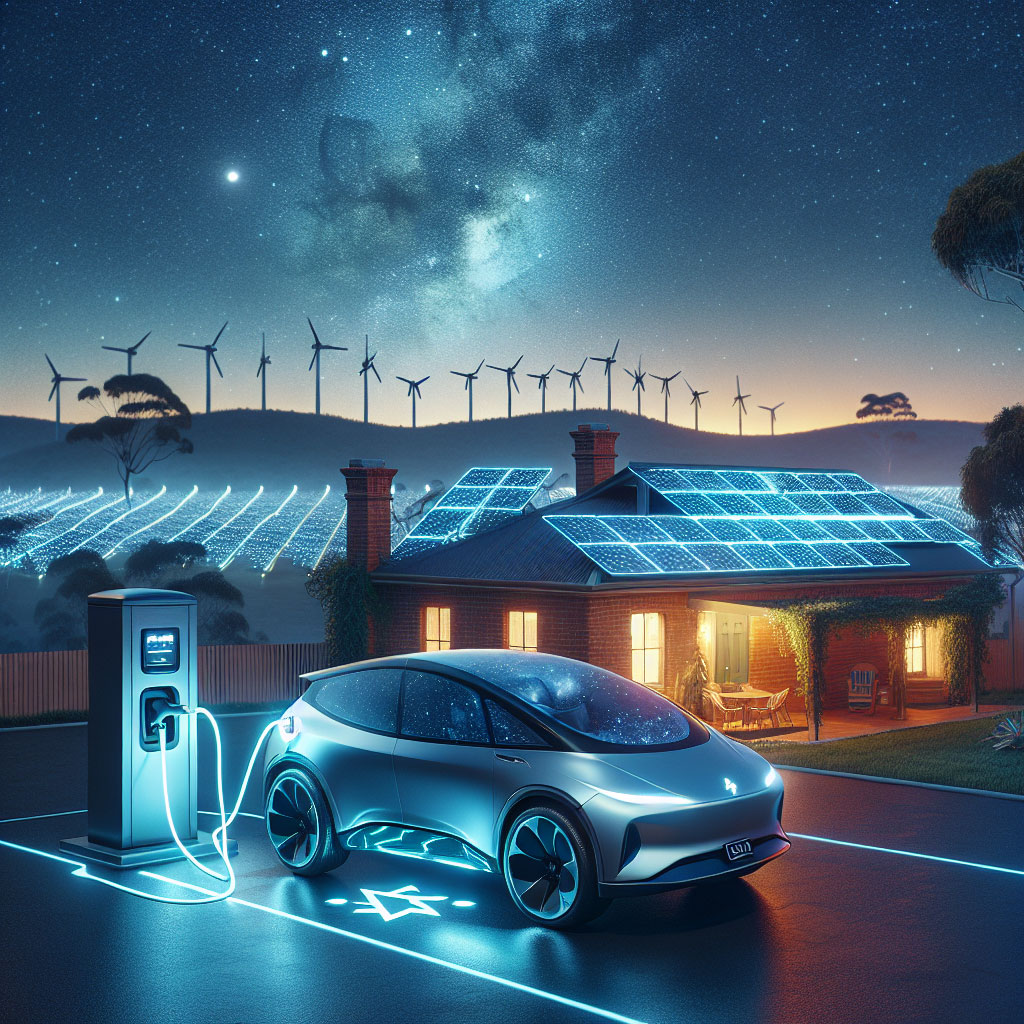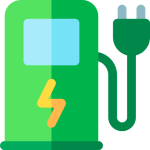
From July 2026 the federal government’s Solar Sharer program will require energy retailers to offer households three hours of free electricity each weekday during the middle of the day. The scheme – available to customers with smart meters who opt in – is designed to make better use of daytime solar generation and give households greater control over their bills. For electric vehicle (EV) owners in particular, midday free power could materially reduce charging costs and accelerate the economics of home electrification.
What the Solar Sharer program offers
- Three hours of free electricity each weekday during a set midday window (commencing July 2026).
- Available to households with smart meters that opt into participating retailer plans.
- Initially targeted to roll out in New South Wales, South Australia and south‑east Queensland, with the federal government working to extend coverage to other jurisdictions.
- The Australian Energy Regulator (AER) has been directed to guard against retailers simply shifting costs into other tariffs; households should still compare offers to confirm net benefit.
Why EV owners stand to gain most
EVs are among the largest household electricity loads. Typical home charging adds roughly 7-11 kWh to provide about 50-60 km of range – far more than most everyday appliances. That concentration of demand means a three‑hour free window can be leveraged to displace a large portion of daily kilometres with no incremental grid cost.
Illustrative numbers
- Assumption: average EV charging requirement of 7 kWh per day.
- At a flat retail rate of $0.35/kWh, that equates to about $894 a year (7 kWh × 365 days × $0.35/kWh).
- Under Solar Sharer, if that 7 kWh is moved into the free midday window, the direct charging cost during that window would be zero – potentially saving most or all of the $894 estimated above (government modelling has cited household savings up to about $800 p.a., depending on usage and plan details).
Operational implications for EV drivers
- Home charger power: typical single‑phase home wall chargers deliver around 7 kW; three‑phase installations support 11-22 kW where available.
- Free midday charging potential: at a 7 kW charger, three hours could deliver about 21 kWh; at higher power chargers, the window could deliver 33-66 kWh.
- For many owners that is enough to cover substantial daily driving or to significantly reduce overnight charging volumes.
- Households with flexible daytime presence – people working from home, shift workers, retirees, or businesses with daytime depot operations – will find the benefit easiest to capture.
Combining Solar Sharer with specialist EV electricity plans
To maximise savings, pair the Solar Sharer midday window with an EV‑friendly electricity plan:
- Look for plans that offer low overnight or super off‑peak rates for any remaining charging not captured by the midday window (some retailers advertise off‑peak rates as low as 8-10¢/kWh).
- Time‑of‑use tariffs that reward flexibility can be combined with scheduled charging to optimise cost.
- If you have rooftop solar, check feed‑in rates and how your retailer treats exported generation alongside the free midday offer.
- Note: some EV‑specific plans restrict EV charging to particular windows – make sure any limits align with your travel and charging patterns.
V2G and bidirectional charging: turning your car into an asset
Vehicle‑to‑Grid (V2G) – bidirectional charging that allows an EV to export energy back to the grid – has the potential to amplify the value of the Solar Sharer window:
- Charge free during the midday window, then export to the grid during evening peaks when wholesale prices spike.
- Early Australian pilots suggest V2G can deliver meaningful revenue to owners; industry estimates commonly cited in trials indicate potential returns in the order of $1,000-$2,000 a year for well‑deployed systems, although outcomes will vary by market conditions and how frequently vehicles are available for dispatch.
- Requirements for V2G: a V2G‑capable vehicle, a bi‑directional charger, and an electricity plan or aggregator arrangement that will accept exported energy and compensate owners.
Practical considerations and what you’ll need
- Smart meter: essential. The free three‑hour window is delivered through time‑of‑use accounting, so older accumulative meters are unlikely to be eligible.
- Opt‑in: participating retailers will require customers to join the Solar Sharer product; it won’t be automatically applied to existing contracts.
- Location and timing: initial availability is state‑limited and timing of the three‑hour window may be set by distributor or retailer; confirm the precise hours at sign‑up.
- Watch out for plan design: the AER has been instructed to prevent direct cost shifts, but retailers still design tariffs differently – compare the whole‑of‑day costs, not only the free window.
Smart charging tips
- Install a programmable or smart home charger, or use your EV’s built‑in scheduling, to ensure charging starts and stops automatically in the free window.
- Map your driving and charging needs so you know how often you must charge and whether midday charging will cover most trips.
- If you have rooftop solar, use your own generation where possible and reserve the free grid energy for higher‑priority loads or additional vehicle charging.
- Compare multiple retail offers – particularly if you intend to use V2G – to ensure you capture genuine value rather than a reshuffling of costs.
Who benefits least
Households without smart meters or those unable to plug in during the midday window (e.g., people who are away from home all day and cannot charge at work) may see less advantage. For these users, established overnight off‑peak plans may remain the most economical option.
Regulatory and market context (brief)
The Solar Sharer sits within a broader push by the federal government to integrate distributed solar into the grid and reduce peak pressure through better use of daytime generation. The AER and other market bodies are engaged to ensure the reforms deliver net consumer benefit and do not merely create accounting shifts between tariff elements. Meanwhile, retailers and aggregators are developing differentiated products – including V2G tariffs and EV‑specific offers – which will mature ahead of the program’s July 2026 start.
Getting ready before July 2026
- Check your meter type: contact your distributor or retailer to confirm you have, or can get, a smart meter.
- Audit your current plan: identify daytime versus overnight rates and how switching to a Solar Sharer product might change your overall bill.
- Consider charger upgrades: if you intend to use scheduled charging or V2G, evaluate smart chargers or bi‑directional equipment and installers.
- Follow provider offers: retailers will publish Solar Sharer products and V2G arrangements in the months leading to the rollout; compare early offers carefully.
Conclusion
Solar Sharer is a timely policy aimed at aligning household consumption with the nation’s abundant daytime solar resource. For Australian EV owners, the program represents a concrete opportunity to reduce charging costs and, when paired with intelligent charging strategies and emerging V2G services, to turn vehicles into flexible energy assets. That said, real savings will depend on meter eligibility, plan design and how well consumers optimise charging behaviour. Consumers should start preparing now – check meters, review plans and consider charger upgrades – so they can benefit from the program when it begins in July 2026.
Frequently asked questions
Who is eligible for the free three‑hour midday electricity under Solar Sharer?
Eligibility generally requires a household smart meter and opting into a Solar Sharer product offered by a participating retailer. Initially the program targets NSW, South Australia and south‑east Queensland; expansion to other states is being pursued.
Will retailers increase prices at other times to offset the free midday power?
The Australian Energy Regulator has been directed to prevent retailers from simply offsetting the free window by inflating other parts of the bill. Nevertheless, retail plans vary: always compare whole‑of‑day costs, not just the headline free hours.
Can I still benefit if I can’t charge my EV during the day?
Yes. If daytime charging is not feasible, traditional overnight off‑peak plans or time‑of‑use tariffs may remain the better option. The Solar Sharer is an additional tool for those who can shift consumption into the midday window.
Do all EVs support V2G?
No. V2G requires both a V2G‑capable vehicle and a compatible bi‑directional charger. While V2G capability is expanding, not every EV on the market supports it. Check both vehicle and charger specifications before planning V2G participation.
How much could I realistically save as an EV owner?
Savings depend on how much charging you can move into the three‑hour free window and the rates you pay at other times. Government modelling and industry analysis have cited household savings of up to around $800 a year for well‑timed daytime charging; V2G pilots suggest potential additional revenue of roughly $1,000-$2,000 p.a. in favourable conditions, though results vary.
About EV Evolution
EV Evolution is the leading online platform dedicated to Australian electric vehicle owners and enthusiasts. We foster a vibrant community, delivering essential EV news and insights, and enhancing user engagement through our innovative, AI-powered chatbot for dynamic discussions. Our mission is to empower Australian electric vehicle owners and enthusiasts by fostering a vibrant, AI-driven online community that connects, informs, and advances the nation’s electric vehicle landscape.




